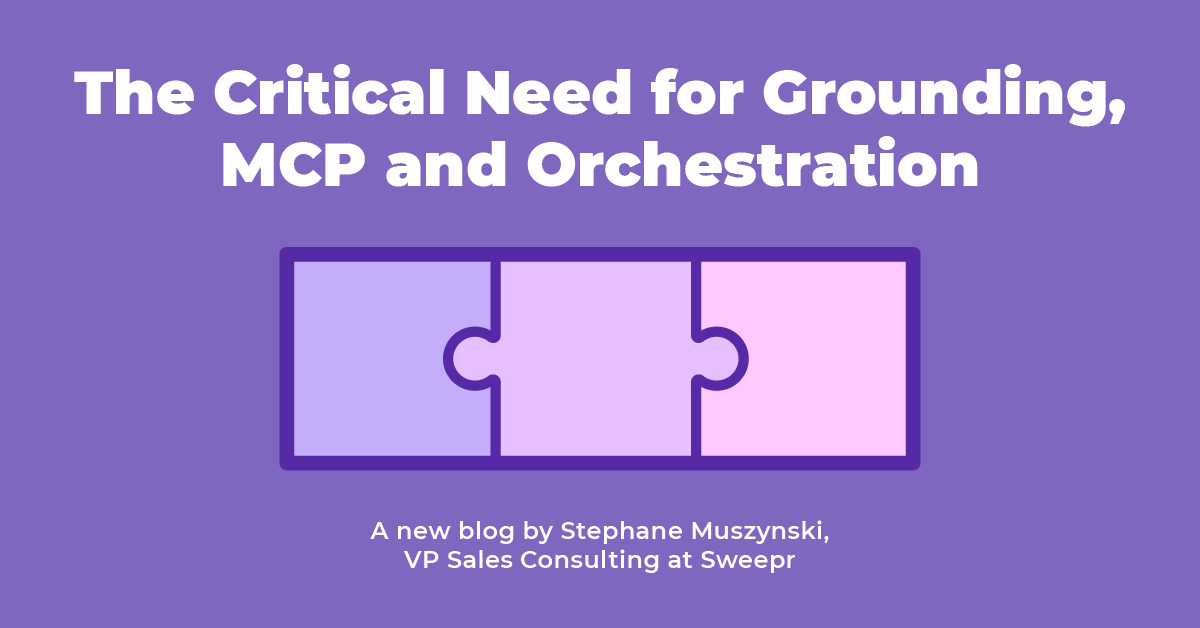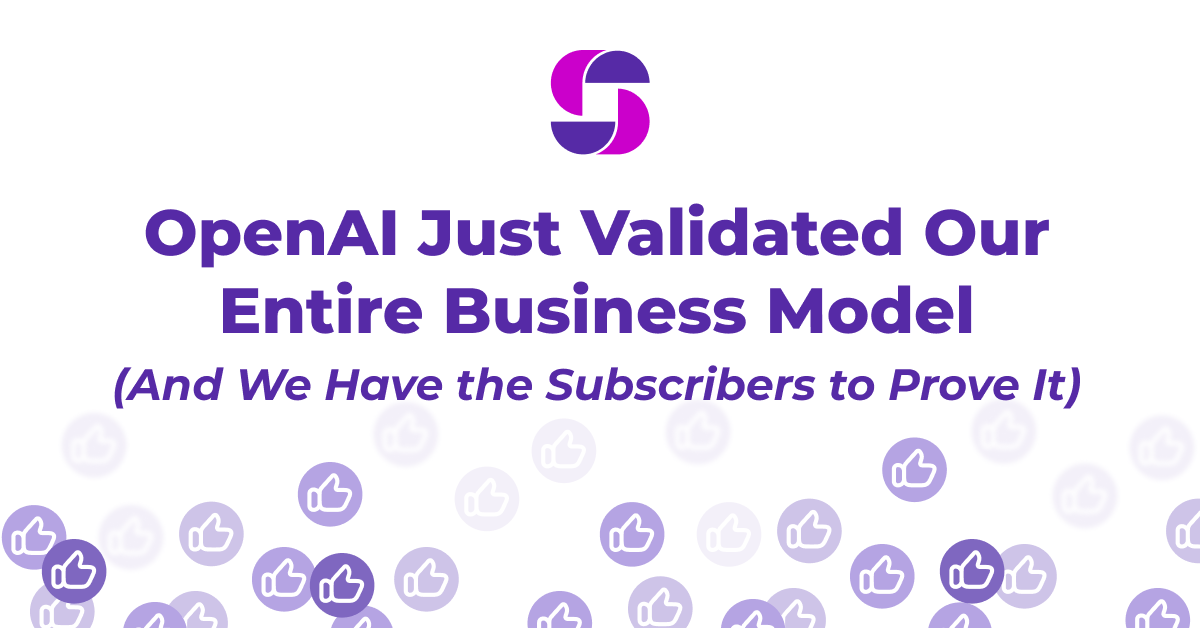The telecommunications industry has witnessed a surge in artificial intelligence adoption, with large language models (LLMs) at the forefront of customer service transformation. While LLMs offer impressive conversational capabilities, relying solely on these models for complex telecom customer care creates significant challenges that can undermine service quality and customer satisfaction. The solution is to create more accurate, efficient, and reliable customer interactions by grounding LLMs with existing content and leveraging Model Context Protocol (MCP) to take advantage of up-to-date data points.
We explored the limitations of an LLM-Only approach in our precedent article and talked about the emergence of hybrid systems taking advantage of the manually created and managed customer intents to ground the LLM. That process results in steering the LLM towards more accurate guidance informed by authoritative documents and up-to-date data points.
In that context, how do you put in place a reliable and standardized strategy to ground and integrate your LLM? The answer to this question is MCP.
“how do you put in place a reliable and standardized strategy to ground and integrate your LLM? The answer to this question is MCP.”
Model Context Protocol (MCP): The Game-Changer
Seamless Integration with Enterprise Systems
MCP provides a standardized way for LLMs to interact with various enterprise systems and data sources. In the telecom context, MCP enables seamless integration with customer relationship management (CRM) systems, billing platforms, network monitoring tools, and knowledge management systems. This integration allows LLMs to access comprehensive customer information and technical data in real-time.
Dynamic Context Building
MCP allows for dynamic context building based on the evolving nature of customer interactions. As conversations progress, the system can continuously gather relevant information from multiple sources, building a comprehensive understanding of the customer’s situation and providing increasingly accurate and helpful responses.
Scalable Knowledge Management
Through MCP, organizations can create scalable knowledge management architectures where new information sources can be easily integrated without requiring model retraining. This flexibility is crucial in the fast-paced telecom environment where new services, technologies, and procedures are constantly introduced.
“Through MCP, organizations can create scalable knowledge management architectures”
Real-World Impact: Complex Query Scenarios
Network Outage Management
Consider a customer calling about service disruption during a network outage. An LLM-only system might provide generic troubleshooting steps, while a grounded system with MCP can access real-time network status information, identify the specific outage affecting the customer’s area, provide accurate restoration timelines, and even proactively offer service credits where appropriate.
Multi-Service Technical Support
When customers have bundled services (internet, TV, mobile) experiencing interconnected issues, resolution requires understanding complex service dependencies and technical configurations. Grounded LLMs with MCP access can pull information from multiple technical systems, understand service interdependencies, and provide comprehensive solutions that address root causes rather than symptoms.
Billing Dispute Resolution
Billing inquiries often involve complex rate calculations, promotional applications, and service usage patterns. A grounded system can access detailed billing records, apply current rate structures, and provide transparent explanations of charges while identifying opportunities for service optimization or cost savings.
Implementation Best Practices
Layered Knowledge Architecture
Successful implementation requires a layered approach where LLMs are connected to multiple knowledge sources with appropriate prioritization. Real-time operational data should take precedence over static documentation, while customer-specific information should override general service information and/or guide through logic to personalize the experience e.g. router model, subscribed plan, network status, …
Having a system that allows to create logic, priorities and a framework for personalized content will simplify this process.
Continuous Content Validation
Establishing processes for continuous validation and updating of grounded content ensures that LLMs consistently access accurate information. A system that manages your grounding material in a simple, flexible and holistic way is very helpful in that task.
The Path Forward
The future of telecom customer care lies not in choosing between human agents and AI, but in creating intelligent systems that combine the conversational capabilities of LLMs with the accuracy and reliability of grounded information sources. By leveraging MCP to connect LLMs with existing enterprise systems and knowledge bases, telecom companies can deliver customer experiences that are both highly automated and highly accurate.
“The future of telecom customer care lies not in choosing between human agents and AI, but in creating intelligent systems that combine the conversational capabilities of LLMs with the accuracy and reliability of grounded information sources.”
This approach transforms customer service from a cost center into a competitive advantage, enabling companies to handle complex queries efficiently while maintaining the accuracy and personalization that telecom customers demand. As the industry continues to evolve, those who embrace grounded AI solutions will be best positioned to meet the increasingly sophisticated expectations of their customers while maintaining operational efficiency and regulatory compliance.
The integration of LLMs with existing content through MCP represents a fundamental shift toward more intelligent, reliable, and effective customer care systems. For telecom companies, this isn’t just a technological upgrade – it’s a strategic imperative for delivering exceptional customer experiences in an increasingly complex and competitive marketplace. This represents a critical infrastructure need as organizations scale their AI implementations.
Infrastructure Management & Complexity Reduction
As organizations deploy multiple LLM-powered applications, they quickly encounter the complexity of managing diverse data sources, keeping grounding materials current, and maintaining MCP server connections. An orchestration platform abstracts this complexity, providing a unified interface for managing what would otherwise be a fragmented ecosystem of databases, APIs, knowledge bases, and integration points.
Dynamic Knowledge Management
One of the biggest challenges with grounding is ensuring that knowledge sources remain current and authoritative. An orchestration platform can give you one place to manage content and integrations, create Agents, manage version control of grounding materials, and provide governance around what sources are trusted for different types of queries. This is particularly valuable in regulated industries where outdated or incorrect information can have serious consequences.
Agent Lifecycle Management
LLM agents require ongoing maintenance – prompt engineering, performance monitoring, capability updates, and behavioral adjustments based on usage patterns. An orchestration platform can provide centralized Agent management and performance analytics.
Choosing a platform
Putting an Agentic AI strategy together then comes down to identifying the right platform to manage all these moving parts. To do this, you would have to define what your grounding material is? Who manages your MCP servers and orchestrates the various Agents to accurately inform your LLM?
“you would have to define what your grounding material is? Who manages your MCP servers and orchestrates the various Agents to accurately inform your LLM?”
This is where Sweepr comes into play. Our platform is where care teams can create and manage customer intents in a no-code authoring environment. These intents are perfect grounding material and give you the ability to gradually improve that information. The platform offers an Agentic architecture where every component becomes a potential Agent for your LLM. Finally, the Sweepr platform is vertically integrated with all the MCP servers you might need and offers a supervisor module to orchestrate the LLM needs.
That means that, with Sweepr, you can gradually move into an Agentic architecture by using powerful deterministic customer intents that will then become grounding material for your LLM. The integrations to backend systems used in those deterministic experiences become MCP servers and the various atomic blocks you have defined to solve customer needs can become individual Agents. In a nutshell, Sweepr will offer your organization a hybrid approach, grow with your needs and guarantee that the work you do today is not throw-away as it organically becomes the basis for your AI strategy.

